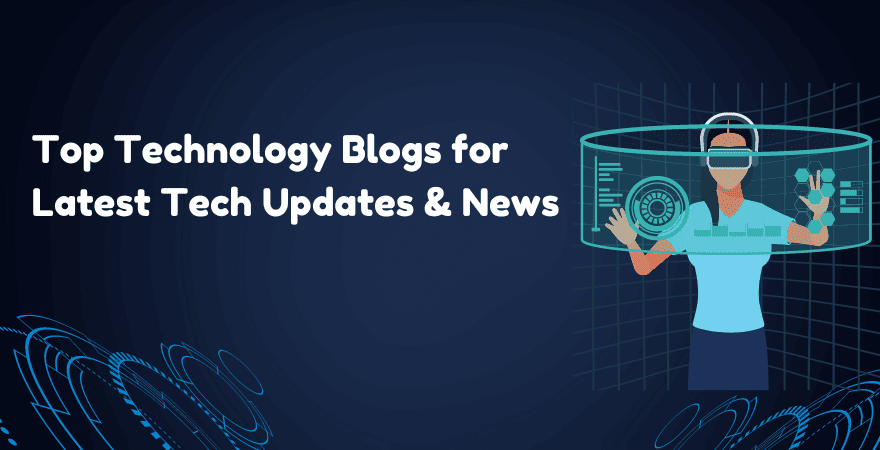The Advancement of the Best tech blog: A Trip Via Tech Background and Future Trends
The Advancement of the Best tech blog: A Trip Via Tech Background and Future Trends
Blog Article
Recognizing the Increase of Side Computing in Today's Digital World
In the swiftly developing landscape of innovation, side computer becomes a critical pressure, improving how data is refined and used. This paradigm change is driven by the expansion of IoT devices and a rising demand for instant data processing. By transitioning data management closer to the source, edge computing addresses important latency concerns while maximizing transmission capacity usage and enhancing security actions. As sectors pivot towards smarter, extra effective systems, recognizing the nuances and implications of this technical innovation becomes crucial. What does this mean for future advancements and the digital ecological community as a whole?
What Is Side Computer
Edge computing, although a relatively current advancement in the realm of modern technology, essentially transforms exactly how data is processed and handled by bringing calculation and information storage space closer to the location where it is needed. Unlike typical cloud computing models, which usually count on centralized data centers that can be geographically far-off, edge computing decentralizes data handling. This distance decreases latency, improves real-time data processing, and enhances the general customer experience by ensuring much faster action times.
At its core, edge computing entails a network of localized tools and framework, such as routers, sensing units, and gateways, qualified of refining information at or near the source. This local handling capacity is especially vital for applications requiring instant data analysis, such as independent vehicles, industrial automation, and smart cities. Furthermore, by offloading data processing tasks from main servers, side computer minimizes transmission capacity needs and enhances data privacy and safety, as delicate details can remain on-site instead of traversing considerable networks.

Key Vehicle Drivers of Adoption
A number of aspects are propelling the fostering of side computer in today's digital landscape. Among the key vehicle drivers is the exponential boost in linked devices, frequently referred to as the Net of Points (IoT) This surge produces vast quantities of data that need to be refined promptly and successfully. Side computing addresses this need by making it possible for data handling closer to the data resource, lowering latency and boosting real-time decision-making capacities.
An additional significant chauffeur is the demand for enhanced data transfer performance. Centralized cloud systems can become overloaded with the sheer volume of information produced by IoT devices, causing bottlenecks (Best tech blog). By refining information at the side, organizations can ease network blockage and boost total system efficiency
Moreover, safety and personal privacy concerns are pressing companies towards side computer. By processing sensitive data locally, companies can mitigate dangers related to data transmission and exposure to prospective cyber risks.
The rise of applications requiring real-time handling, such as autonomous cars and augmented fact, additionally Read Full Report necessitates the fast action times that edge calculating gives. Collectively, these chauffeurs are making edge computing an important part of contemporary IT infrastructure, leading the way for its prevalent adoption throughout different sectors.
Advantages Over Cloud Computer
How does side computer differentiate itself from typical cloud computing? Largely, edge computer brings data processing closer to the source of information generation, typically on neighborhood tools or close-by web servers, rather than depending on central data. This closeness substantially decreases latency, allowing real-time data handling and decision-making. For markets where milliseconds matter, such as self-governing cars or industrial automation, the reduced latency provided by side computing can be essential.
In addition, side computing boosts transmission capacity efficiency (Best tech blog). By refining data in your area, only the essential information is sent to the cloud for more evaluation or storage space, lowering the quantity of information that goes across the network. This not only reduces network blockage yet additionally lowers information transmission costs
Side computing also supplies better information privacy and safety and security. Sensitive information can be refined locally without being sent to the cloud, decreasing the exposure to potential cyber threats. This is specifically valuable for markets dealing with secret information, such as health care and monetary services.
Additionally, edge computer makes sure greater durability and integrity. Regional handling enables continued procedure even when connectivity to the cloud is endangered, maintaining crucial functions and services regardless of potential network disturbances. These advantages jointly demonstrate side computer's transformative potential in maximizing performance and safety in digital ecosystems.
Considerations and obstacles
While side computer offers various advantages, it likewise provides special obstacles and factors to consider that must be addressed to totally understand its possibility. Additionally, handling and checking a decentralized network of side tools can be intricate, calling for innovative devices and approaches to make certain smooth procedure and maintenance. Best tech blog.
Another consideration is the scalability of edge computing solutions. As the number of linked gadgets expands, so does the demand for processing power at the side, which can bring about source restrictions. Organizations should very carefully plan their facilities to suit this development without compromising efficiency or effectiveness.
Interoperability is an additional crucial variable. With numerous software Best tech blog and hardware components entailed, ensuring compatibility and smooth assimilation can be challenging. Standardization efforts are vital to assist in communication between diverse systems.
Future Trends in Side Computer
Anticipating the future, edge computing is poised to transform various markets by enabling quicker data handling and minimizing latency. As the quantity of information created by IoT devices continues to expand, side computer will certainly become progressively crucial in handling this increase effectively.
An additional arising fad is the development of edge-native applications designed specifically to leverage the distinct abilities of edge computing. These applications will enhance performance Bonuses and source usage, causing boosted effectiveness across various industries. Additionally, improvements in 5G modern technology will certainly further boost side computer by offering the required infrastructure for high-speed, low-latency interaction between tools and side nodes.
Final Thought
Edge computing's rise is driven by the spreading of IoT tools and the requirement for real-time data handling, which boosts performance by minimizing latency and decentralizing data management. This approach reduces data transfer ineffectiveness and protection issues, assisting in improvements in applications like clever cities and autonomous lorries. In spite of obstacles such as facilities complexity and combination, the future of side computer guarantees a more responsive electronic environment, with proceeded developments forming its advancement and expanding its applicability throughout markets.
Edge computing, although a relatively recent innovation in the world of modern technology, essentially changes how information is refined and handled by bringing calculation and information storage space closer to the location where it is required. Unlike standard cloud computer versions, which commonly count on centralized data facilities that can be geographically far-off, side computer decentralizes data handling. In addition, by offloading data handling jobs from central web servers, side computing lowers data transfer needs and improves information privacy and security, as sensitive details can continue to be on-site rather than passing through comprehensive networks.

Report this page